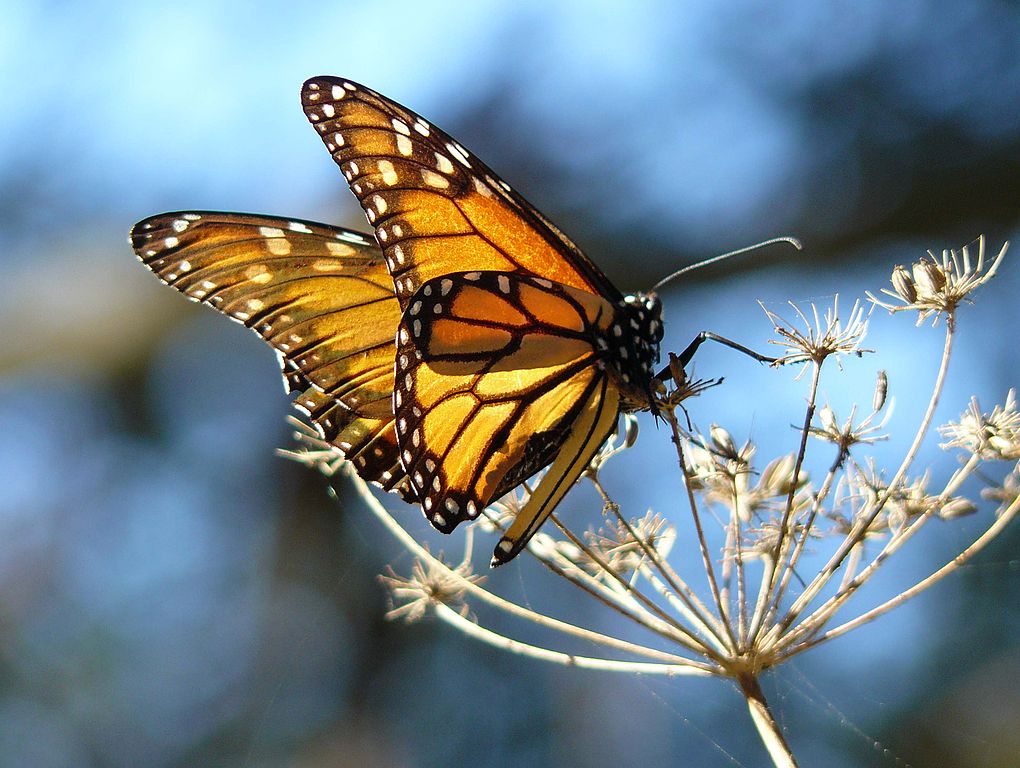A new study shows that the number of butterflies in the United States has dropped by 22% over 20 years. The loss of butterflies could have serious effects on the environment and on US farms. Scientists say it’s important to protect butterflies and other insects before it’s too late.
Butterflies are important for many reasons. Like bees, they help plants grow by spreading pollen – a powder in the center of most flowers. By “pollinating” (spreading pollen between plants), butterflies help plants create seeds and fruits. This is especially important for farmers.
And, like other insects, butterflies also provide important food for other animals, including birds.
Now, a new study published in Science, shows that butterfly numbers have dropped sharply. The study is the largest collection of data on US butterfly numbers ever.

(Source: Pacific Southwest Region USFWS [CC BY 2.0], via Wikimedia Commons.)
Researchers put together information from 35 different butterfly counting programs across the US. The data covers over 12.5 million butterfly sightings between 2000 and 2020. The scientists found that the number of butterflies in the US dropped on average by 22% over that time.
Some species are doing far worse. In all, the study covered 554 different butterfly species. About one in three of those are showing a serious drop in numbers. A hundred species of butterfly have seen their populations drop by more than 50%. Only 3% of all species studied had their numbers go up over the 20-year period.
Nick Haddad, one of the scientists involved in the study, puts it simply: “Butterflies are vanishing from the face of the earth.”

(Source: Jake McCumber [CC BY-SA 4.0], via Wikimedia Commons.)
The study looked at butterfly populations in all states except Alaska and Hawaii. Numbers fell in all areas – even in cooler northern regions, which were generally better than other areas. The situation was the worst in the hot, dry Southwest.
The scientists say there are three main reasons for the drop in numbers.
- Loss of habitat: As more and more land is taken over by roads and buildings, there is less space for butterflies to live and lay eggs.
- Rising temperatures: As the climate has changed, the US has gotten hotter and drier. Butterflies depend on plants. When plants are hurt by heat and drought, it’s harder for butterflies to survive.
- Pesticides: Pesticides don’t just kill pest insects. These chemicals also affect butterflies and other “good” insects. This is especially true for “neonicotinoid” pesticides, which have been used more and more since the 1990s. Pesticides are one of the main reasons for the drop in butterfly numbers.

(Source: docentjoyce [CC BY], via Wikimedia Commons.)
More than 30 kinds of butterflies are now on the US endangered species list. The Monarch butterfly may soon be added.
Scientists say it’s important to save butterflies and other insects before it’s too late. Insects help support life on Earth and are a key part of a healthy environment.
The researchers say that creating more natural areas for butterflies could make a big difference. Limiting the use of pesticides will also help.
The good news is that the life cycle of insects moves very quickly. That means that, with good conditions, butterfly numbers have a chance of bouncing back.
Did You Know…?
Butterflies are easy to spot and are commonly studied. But experts say these results may also tell us a lot about insects that aren’t so well-studied. It’s likely that many other insects are in trouble, too.
